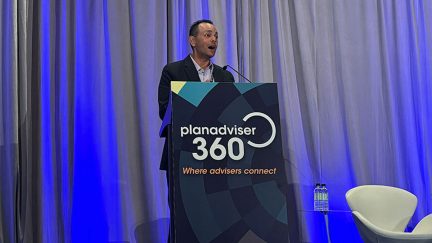Want the latest retirement plan adviser news and insights? Sign up for PLANADVISER newsletters.
Adviser Survey Closes End of Day – Take To Be Eligible for Top 100 Advisers
Once again this year, in an attempt to minimize the number of surveys we ask you to complete, we have combined the Top 100 questionnaire with our annual Retirement Plan Adviser Survey. The deadline has been extended through the end of the day.
PLANADVISER magazine is conducting our annual survey evaluating how advisers view the current retirement plan industry. The deadline for submissions has been extended through the end of the day. Take note, the responses are used to generate our annual Top 100 rankings. Access the survey form here.
Once again this year, in an attempt to minimize the number of surveys we ask you to complete, we have combined the Top 100 questionnaire with our annual Retirement Plan Adviser Survey. The survey questions will ask about advisers’ practices, defined contribution providers, fund families and investment providers, and broker/dealers.
Thank you for taking the time to complete this survey. If all information is readily available and all questions are answered this survey should take about 30 minutes to complete. The status bar at the top of each page shows the percentage of questions completed. Some questions will automatically be skipped depending on your responses. You can start it and come back later to complete.
THIS QUESTIONNAIRE IS INTENDED TO BE FILLED OUT BY ADVISERS WITH 401(k) AND OTHER DEFINED CONTRIBUTION PLAN CLIENTS. Only advisers are eligible to complete this questionnaire on their own behalf and advisers must fill it out individually. Any provider found to be completing this questionnaire will be excluded from the survey.
ALL RESPONSES WILL BE KEPT CONFIDENTIAL UNLESS YOU TELL US OTHERWISE. If you elect to take part in the Top 100 Advisers section, certain of those questions will be used to determine eligibility and will be printed/made public. The survey results will be published in upcoming issues of PLANADVISER magazine. Survey responses will be pooled for reporting purposes, and the published survey results will not mention any respondents.
Feel free to print the survey pages if you would prefer to take some time to fill it out over a few days. If you have any questions, please contact: Alison Cooke Mintzer, Editor in Chief of PLANADVISER, at alison.mintzer@strategic-i.com.
Thanks very much for your interest in our surveys. In exchange for your time, we will send a 2018 Plan Benchmarking Report to all completed survey respondents. Also, the aggregated results will be published in upcoming issues of PLANADVISER.
And for those wondering, nominations will soon be open for the 2019 PLANSPONSOR Retirement Plan Sponsor and Adviser of the Year awards. Stay tuned.
You Might Also Like:

Weak Market Returns Sink Corporate Funding Ratios

How to Establish Better Decumulation Options for Future DC Plans



